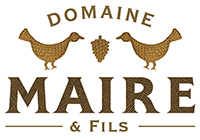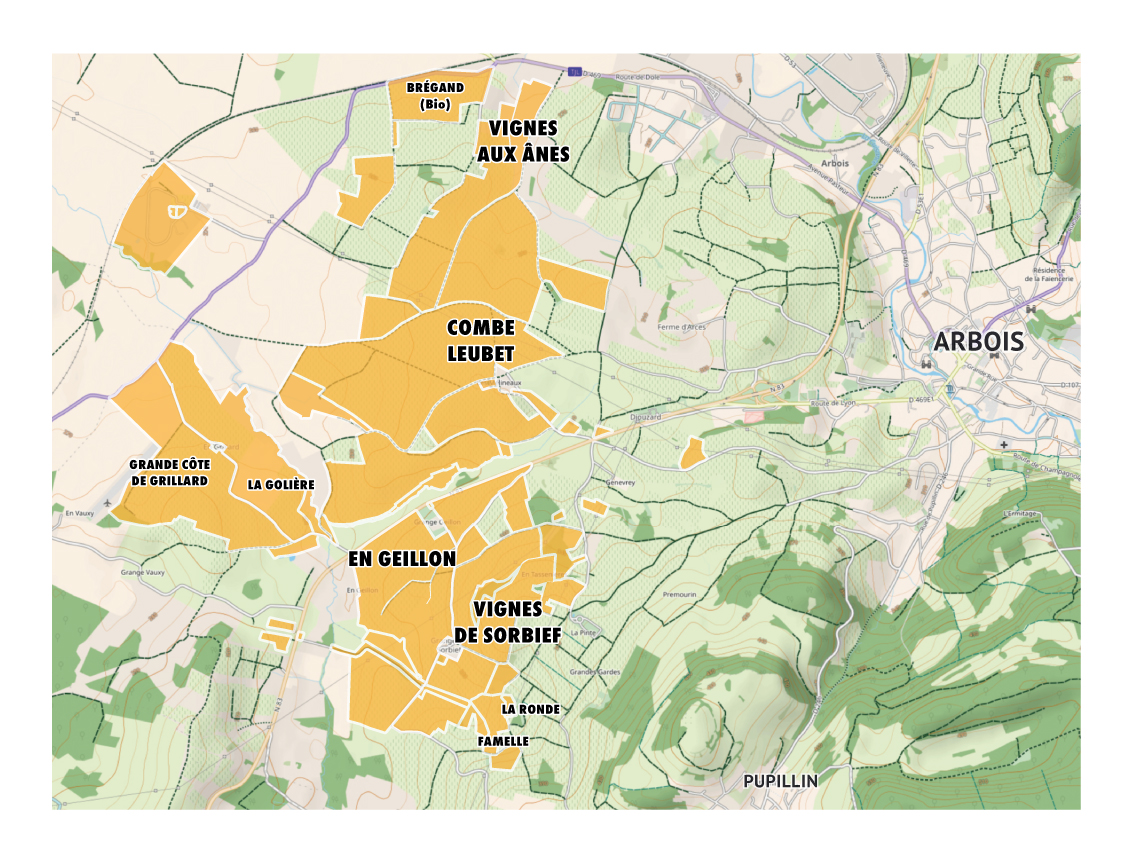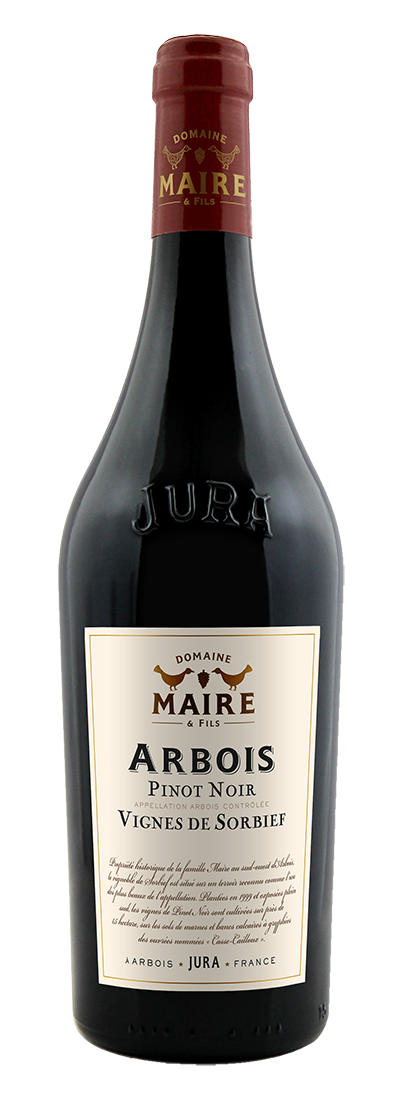ARBOIS PINOT NOIR VIGNES DE SORBIEF 2024

click on one of the vintages below for further information
Several generations have been necessary to patiently built one of the largest and greatest estates in the area, focused on key appellations such as Château-Chalon, l’Étoile and Arbois. The Domaine MAIRE & Fils covers nowadays 234 hectares of vines producing all the area grapes varieties.
In the Jura area, Pinot Noir is often blended with other varieties, for its flavour and cellaring potential. It can also be enjoyed as a single-varietal wine. Planted since the 15th century in the Jura, on gravelly soils, it is often the first vine variety to ripen in the area. It gives red wines with a strong colour and hints of wild mushrooms, cherries and wild berries.
The parcel is located in the west of the Domaine and to the southwest of the Arbois village on a lovely hill overlooking the famous “Route des vins du Jura” (the Jura wine road) RN 83.
- Surface: 1,40 Ha
- Facing due south
- Average age of vines : 26 years (1999)
- Soils: marls and limestones with fossil shells.
The work in the vines, is based on the respect of the nature and the soil. For young vines, located on steep slopes, to avoid erosion, we cultivate a row out of two, practice soil reassembly to aerate the lands subjected to settlement due to moisture, and grass with plants. Such as clover, which, by competing on the vine, can modulate its mineral and water supply and control its vigour and yield. The Guyot double size is necessary for the Pinot Noir to better control its performance.
The year 2024 will remain etched in our memories.
The weather conditions were extreme: temperatures nearing 40°C, periods of intense drought, and episodes of heavy rain and hail. Our vineyards were severely tested, and we experienced a significant drop in yields, losing between 60% and 70% of our harvest.
Despite an early start to the growing season in March, we were able to begin the harvest at the usual time, around late September. The harvest spanned 3 to 4 weeks, allowing us to pick the grapes at their optimal ripeness.
The first tastings are promising: our wines are well-balanced, with smooth notes and generous aromas. The whites stand out for their freshness and intensity, thanks to high concentrations of thiols. The reds offer intense fruitiness and a delicate texture, with acidity levels that align with our region’s expectations.
Despite the challenges posed by the climate, we remain optimistic. This vintage, although marked by reduced production, could very well turn out to be exceptional. We look forward to seeing how these wines will evolve over time.
The weather conditions were extreme: temperatures nearing 40°C, periods of intense drought, and episodes of heavy rain and hail. Our vineyards were severely tested, and we experienced a significant drop in yields, losing between 60% and 70% of our harvest.
Despite an early start to the growing season in March, we were able to begin the harvest at the usual time, around late September. The harvest spanned 3 to 4 weeks, allowing us to pick the grapes at their optimal ripeness.
The first tastings are promising: our wines are well-balanced, with smooth notes and generous aromas. The whites stand out for their freshness and intensity, thanks to high concentrations of thiols. The reds offer intense fruitiness and a delicate texture, with acidity levels that align with our region’s expectations.
Despite the challenges posed by the climate, we remain optimistic. This vintage, although marked by reduced production, could very well turn out to be exceptional. We look forward to seeing how these wines will evolve over time.


